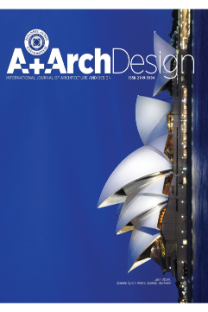Yeşil ve Mavi Teknolojilerin Dış Mekânlarda Isı Stresini Azaltmaya Muhtemel Katkısı, Guelma Şehri - Cezayir Örneği
Yeşil ve mavi teknolojiler, estetik ve yapısal boyutlarına ek olarak, doğal bir düzenleme sürecine
dayanarak kentsel mikro iklimi değiştirme imkânı sunar. Bu makale, ısı stresi sırasında dış mekânlarda
bitki örtüsü ve su kütlelerinin mikro iklimsel düzenlemesinin etkisini araştırdı, 2019'un en sıcak döneminde
hava sıcaklığını, bağıl nemi ve rüzgâr hızını ölçtük. Kıskançlık modeli. 2. ve 3. senaryolarda vejetasyon ve
su kütleleri sırasıyla çıkarıldı, yüksek sıcaklık ve düşük neme karşılık gelen ısı stres hissi gösterdi. Mevcut
dış mekân senaryosu, mikroklimatik regülasyon açısından ikinci sırada yer alırken, önerilen su kütleleri ve
bitki örtüsü senaryosu, düşük sıcaklık ve yüksek nem ve serin hız ile ısı stresinde en iyi mikroiklim
koşullarını göstermiştir. Bulgular, bitki örtüsü ve su kütlelerinin birleşik etkisinin optimal bir mikro iklimsel
düzenlemeye yol açabileceğini, dolayısıyla dış mekânlarda ısı stresini azaltabileceğini göstermektedir.
Anahtar Kelimeler:
Bitki örtüsü, Su kütleleri, Isı stresi, Mikroiklim düzenlemesi, Dış mekânlar
Potential Contribution of Green And Blue Technologies to Reduce Heat Stress In Outdoor Spaces, Case of Guelma City-Algeria
Green and blue technologies in addition to their aesthetic and structural dimension, it offer the
possibility of modifying the urban microclimate by relying on a process of natural regulation. This paper
investigates the effect of microclimatic regulation of vegetation and water bodies in outdoor spaces during
heat stress, we measured air temperature, relative humidity and wind velocity during the hottest period of
2019. The study simulates four scenarios for the square of martyrs which is situated in Guelma city by using
Envi-met model. In scenarios 2 and 3 vegetation and water bodies were removed respectively, it has shown
high temperature and low humidity corresponding to heat stress sensation. The scenario of the current
outdoor space was ranked second in terms of microclimatic regulation while the scenario of recommended
water bodies and vegetation have shown the best microclimatic conditions in heat stress with low
temperature and high humidity and cool velocity. The findings show that the combined effect of vegetation
and water bodies could lead to an optimal microclimatic regulation, thus it could reduce heat stress in
outdoor spaces.
Keywords:
Vegetation Water bodies, , Heat stress, Microclimatic regulation, Outdoor spaces,
___
- [1] Tesselaar, M., Botzen, W. J., & Aerts, J. C. (2020). Impacts of Climate Change and Remote Natural Catastrophes on EU Flood Insurance Markets: An Analysis of Soft and Hard Reinsurance Markets for Flood Coverage. Atmosphere, 11(2), 146.
- [2] Rosenzweig, C., Solecki, W. D., Hammer, S. A., & Mehrotra, S. (Eds.). (2011). Climate change and cities: First assessment report of the urban climate change research network. Cambridge University Press.
- [3] Gaspari, J., & Fabbri, K. (2017). A study on the use of outdoor microclimate map to address design solutions for urban regeneration. Energy Procedia, 111(October), 500-509.
- [4] Djukic, A., Vukmirovic, M., & Stankovic, S. (2016). Principles of climate sensitive urban design analysis in identification of suitable urban design proposals. Case study: Central zone of Leskovac competition. Energy and buildings, 115, 23-35.
- [5] URL-1. https://www.climatelinks.org/projects/atlas. Heat Waves and Human Health, Emerging Evidence and Experience to Inform Risk Management in a Warming World, 2019, last accessed on 17 April 2020
- [6] Rchid, A. (2012). The effects of green spaces (Palme trees) on the microclimate in arides zones, case study: Ghardaia, Algeria. Energy Procedia, 18, 10-20.
- [7] Li, L., Zhou, X., & Yang, L. (2017). The analysis of outdoor thermal comfort in Guangzhou during summer. Procedia Engineering, 205, 1996-2002.
- [8] Sayad, B., & Alkama, D. (2019, July). Study of the microclimate behavior in spaces between buildings: Which strategy to adopt during cold season in Guelma’s public SPACES?. In AIP Conference Proceedings (Vol. 2123, No. 1, p. 030007). AIP Publishing LLC.
- [9] Lemonsu, A., Masson, V., Shashua-Bar, L., Erell, E., & Pearlmutter, D. (2012). Inclusion of vegetation in the Town Energy Balance model for modelling urban green areas.
- [10] Buyadi, S. N. A., Mohd, W. M. N. W., & Misni, A. (2015). Vegetation's role on modifying microclimate of urban resident. Procedia-Social and Behavioral Sciences, 202, 400-407.
- ISSN: 2149-5904
- Başlangıç: 2015
- Yayıncı: İstanbul Aydın Üniversitesi
